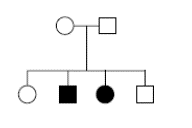#Question id: 2661
#SCPH05 I Biotechnology
In the histidine operon, if the codons coding for histidine were removed, which of the following would you predict would happen?
#Question id: 2661
#SCPH06 I Botany
In the histidine operon, if the codons coding for histidine were removed, which of the following would you predict would happen?
#Question id: 2662
#SCPH05 I Biotechnology
In the tryptophan operon, tryptophan serves as ________________.
#Question id: 2662
#SCPH06 I Botany
In the tryptophan operon, tryptophan serves as ________________.
#Question id: 2663
#SCPH05 I Biotechnology
A ______________ is a collection of clones that, among themselves, contain all the DNA sequences of the organism.
#Question id: 2663
#SCPH06 I Botany
A ______________ is a collection of clones that, among themselves, contain all the DNA sequences of the organism.

